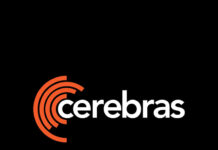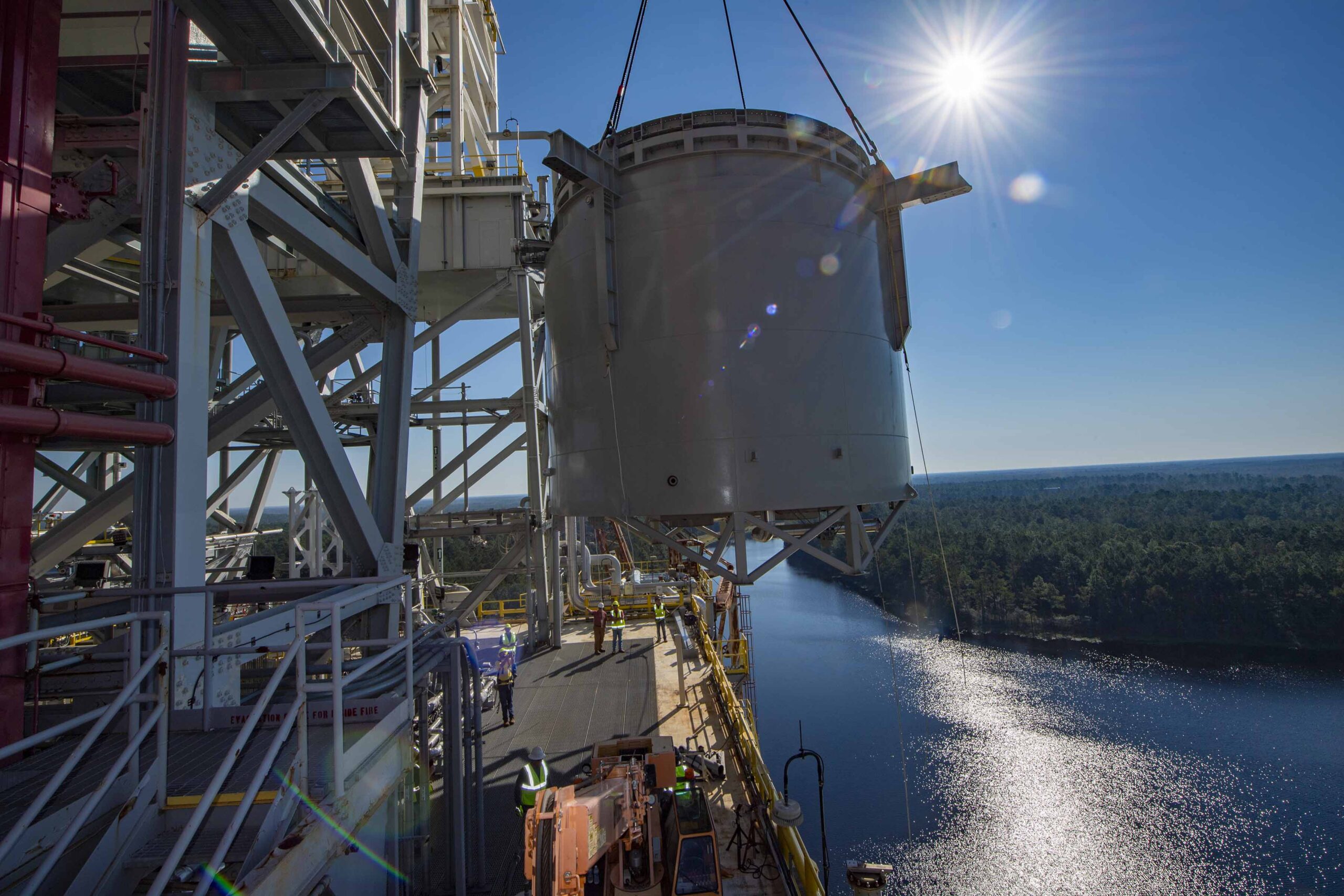NASA’s Stennis Space Center Achieves Major Milestone for Future Artemis Missions
NASA’s Stennis Space Center, located near Bay St. Louis, Mississippi, has recently reached an important milestone in the preparation for future Artemis missions aimed at exploring the Moon and beyond. The achievement involves the installation of a crucial component that will play a significant role in the testing of a new rocket stage, the Exploration Upper Stage (EUS), which will be integral to NASA’s Space Launch System (SLS).
Over the span of two weeks, starting from October 10, NASA’s dedicated teams successfully completed the safe lifting and precise installation of an interstage simulator in the B-2 position of the Thad Cochran Test Stand. This simulator is essential for forthcoming tests of NASA’s EUS, an advanced segment of the SLS designed to protect the upper stage during Artemis launches. The interstage simulator acts as a protective layer, ensuring the safety and functionality of the EUS throughout the rigorous testing phases.
Barry Robinson, the project manager overseeing the exploration upper stage Green Run testing at the Thad Cochran Test Stand, emphasized the significance of this development. “NASA Stennis is at the forefront of the critical path for future space exploration,” Robinson stated. He further explained that installing the interstage simulator marks a pivotal step in preparing the new and more powerful upper stage for future Artemis missions. This preparation is vital to ensure the safety and success of these ambitious space endeavors.
The EUS is being constructed by Boeing at NASA’s Michoud Assembly Facility in New Orleans. It represents a significant upgrade to the current capabilities of the SLS. The EUS will serve as the upper stage for the evolved Block 1B version of the SLS, enabling NASA to embark on its most challenging deep space missions. This new stage is set to replace the interim cryogenic propulsion stage found on the Block 1 version of the SLS, which features a single engine and can lift 27 tons of crew and cargo to lunar orbit.
One of the most exciting advancements offered by the new exploration upper stage is its increased payload capacity. Powered by four RL10 engines, manufactured by SLS engines contractor L3Harris, the EUS will boost payload capacity by a remarkable 40%. This enhancement means that NASA will be able to send 38 tons of cargo along with a crew to the Moon, or up to 42 tons of cargo without a crew, significantly expanding the possibilities for future space exploration missions.
The installation of the interstage simulator on the B-2 side of the Thad Cochran Test Stand is a critical component of the preparation process. This simulator, weighing 103 tons and measuring 31 feet in diameter and 33 feet tall, will function similarly to the SLS interstage, safeguarding EUS electrical and propulsion systems during the Green Run tests. The top portion of the simulator is designed to serve as a thrust takeout system, absorbing the thrust generated during the EUS hot fire and transferring it back to the test stand. With its four engines, the EUS is capable of providing more than 97,000 pounds of thrust, underscoring its significant role in the Artemis missions.
Before the EUS takes its first flight on the Artemis IV mission, it will undergo a comprehensive series of Green Run tests at NASA Stennis. These tests will rigorously evaluate the integrated systems of the stage, culminating in a hot fire test of the stage’s four RL10 engines. This final test mimics the conditions of an actual mission, ensuring that the EUS is ready for the challenges of space travel.
The installation of the interstage simulator has been a meticulous process. NASA Stennis crews previously lifted the simulator to measure and align it accurately with the test stand. Now, equipped with all necessary piping, tubing, and electrical systems, the simulator is fully prepared to support the upcoming Green Run tests. The next phase involves the fabrication of the mechanical and electrical systems that will connect the test facility to the simulator. Once these systems are in place, activation flows will be conducted to verify that the test stand operates in accordance with the stringent test requirements.
Through the Artemis program, NASA is laying the groundwork for sustained scientific exploration of the Moon. This includes landing the first woman, the first person of color, and the first international partner astronaut on the lunar surface. Beyond the Moon, Artemis is also preparing for human expeditions to Mars, with the ultimate goal of benefiting all of humanity through the advancement of space exploration.
For those interested in learning more about NASA’s Stennis Space Center and its role in the Artemis missions, additional information can be found on NASA’s official website: NASA Stennis.
This milestone at NASA’s Stennis Space Center marks a significant step forward in humanity’s quest to explore the depths of space. The successful installation of the interstage simulator and the forthcoming testing of the EUS are critical to ensuring the success of future Artemis missions. These missions are not only about reaching new frontiers but also about inspiring generations, fostering international collaboration, and advancing our understanding of the universe. As NASA continues to push the boundaries of what is possible, the world watches with anticipation, eager to witness the next chapter in the story of space exploration.
For more Information, Refer to this article.



































